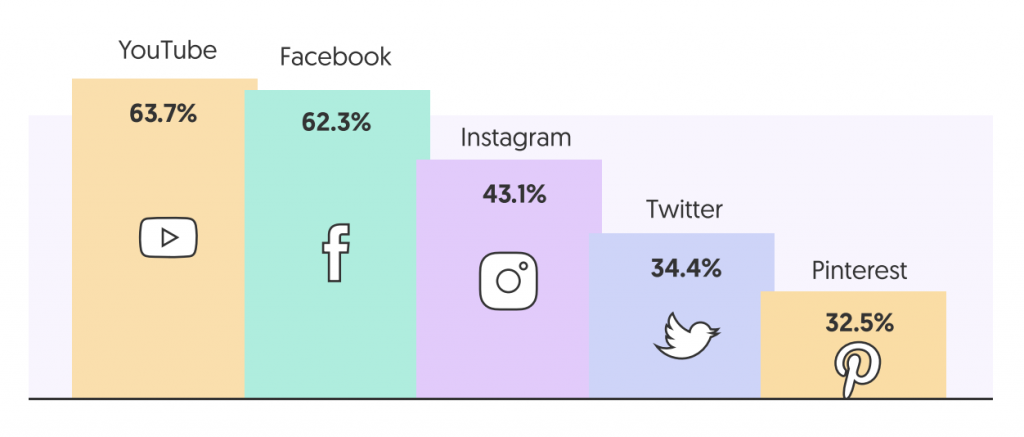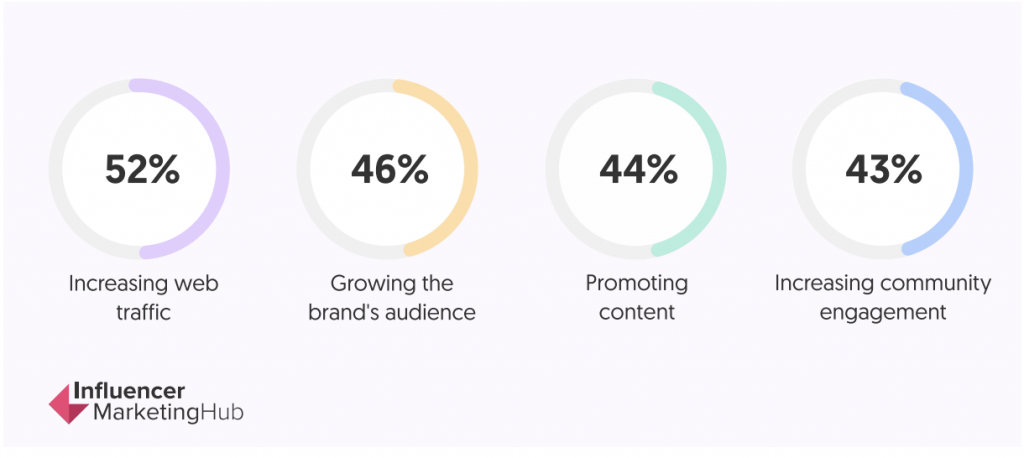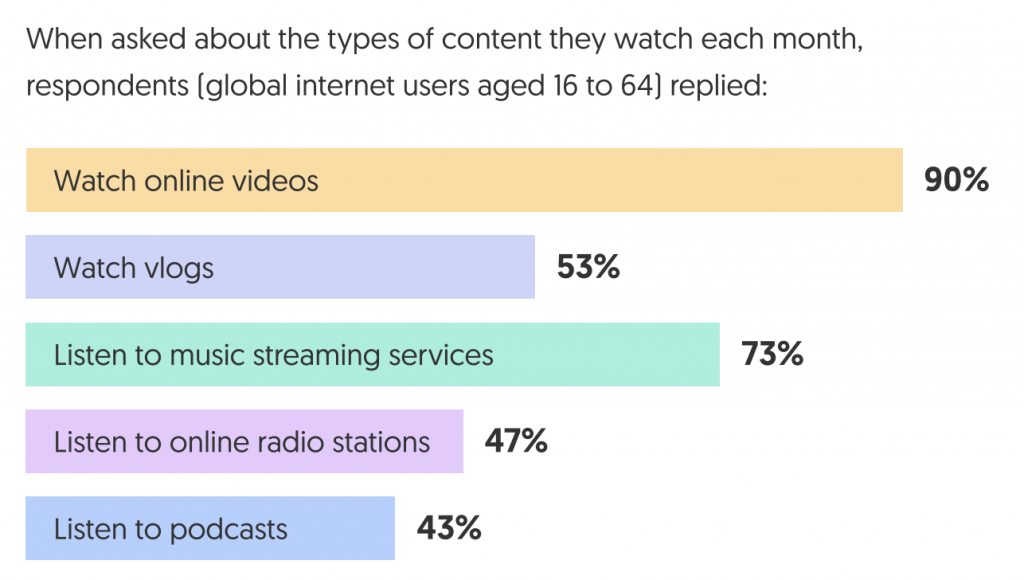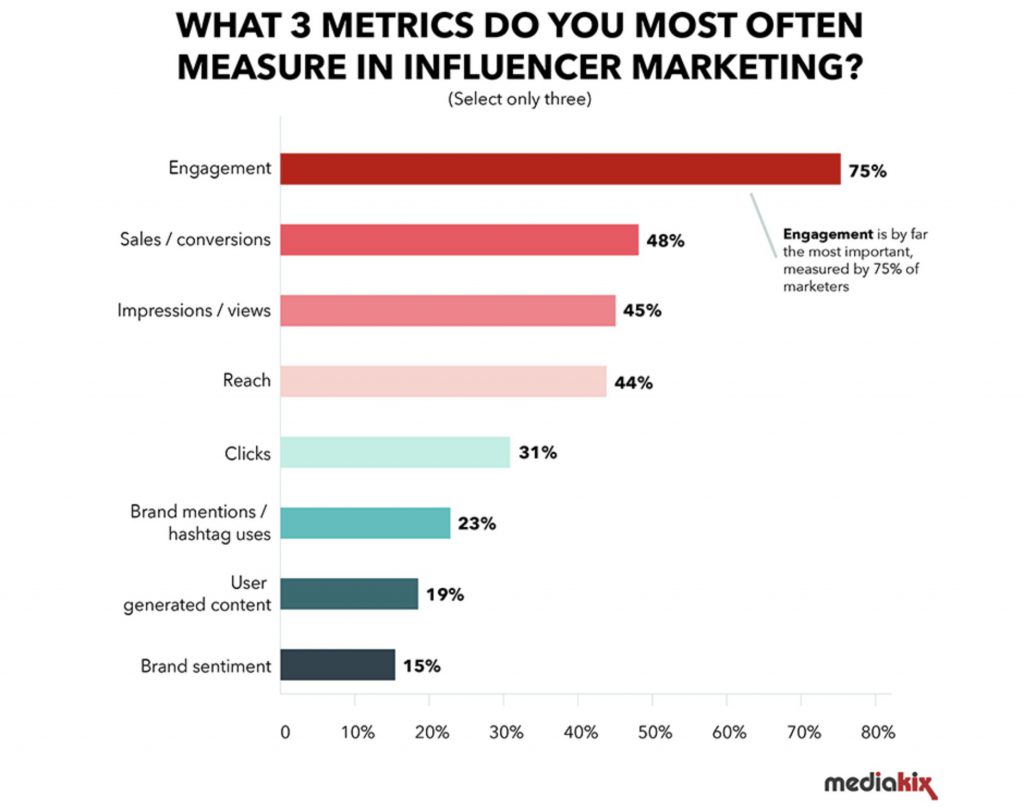After a year where most of us spent more time on social media than ever, it is not surprising that 63% of marketers intend to increase their influencer marketing budget in the next year. Indeed, as many of us were separated by physical distance, we looked more and more towards the influencers we follow to feel that personal connection. According to an eMarketer survey, between 46% and 51% of US adults claimed they were using social media more since the outbreak began.

Percentage increase in time spent on social media platforms, Source: Influencer Marketing Hub
At the current growth rate, the influencer marketing industry is on track to become a $15 billion dollar industry by 2022. However, in spite of this growth and increasing influencer marketing budgets, many brands remain unsure of the best way to approach and negotiate with influencers. But getting these influencer contracts right is critical; after all, 89% of marketers say ROI from influencer marketing is comparable to or better than other marketing channels.
If you plan to invest in more influencer marketing this year but are stumped as to how to negotiate with influencers, read on for our 10 most effective ways to negotiate influencer contracts.
#1 Determine your marketing goals

Reasons Brands Use Social Media, Source: Influencer Marketing Hub
Without a clear goal for your campaign, it will be difficult to know what areas of the partnership are up for negotiation and which are non-negotiable. The top five influencer marketing goals are brand awareness, reaching a new audience, generating sales, improving brand advocacy, and lead generation. For example, if your brand’s primary goal is to generate sales, it would be worthwhile to include a multi-use coupon code for your influencer to share with their followers. In this case, it wouldn’t serve you to limit that code to one-time use as that would hurt your ability to measure the effectiveness of the campaign over time.
#2 Do your research
61% of marketers agree it’s challenging to find the best influencers for a campaign – and making the wrong choice can set your campaign up for failure from the start. You will have the most success both negotiating your influencer contracts and executing your campaign if you go into the partnership with a strong understanding of the influencer, their brand, and their followers.
Tools such as Pitchbox can help brands to identify the right influencers to work with, but there is also no replacement for old-fashioned research directly on Instagram, YouTube, or TikTok.
#3 Develop an authentic relationship with the influencer
Once you have identified influencers that you would like to partner with, follow and begin engaging with them on their social platforms of choice. If the influencers you want to work with are on TikTok, now is the time to create an account and start experimenting. Develop real relationships through similar interests, shared experiences, or general investment in the content they are creating. Your influencer will be much more open to your pitch if you are already on their radar.
Following an influencer and engaging in their content early on can also help you to identify signs of fake influencers or inauthentic engagement. Check their posts for inauthentic comments, a high number of followers on new accounts, or sudden spikes in engagement.
#4 Craft a pitch that is specific and personalized to their brand
One of the best ways to open influencer contract negotiation is with a pitch that is specific to your needs and crafted to their brand. When engaging an influencer for the first time, share your knowledge of their work and why you think they would be a good fit for your brand. This could include an appreciation of their creativity, their strong sense of community, or their brand values.
It is also important to include a clear “ask” in your initial outreach. You can leave this open for negotiation, but outlining your position early on will give you a firm foundation to build your campaign around. Factors to consider building into your influencer contracts include:
- Payment terms
- Amount of brand coverage or number of sponsored posts
- Amount of control over the script
- Content usage rights
To read more on reaching out to influencers, read our 7 tips for effective influencer outreach.
#5 Match budget + value
Of course, marketing is only successful as long as it doesn’t cost more than the return you achieve, but it’s important for marketers to keep in mind that influencing is a job and your partners need to be paid fairly for what they do. Not only will valuing their worth set up your partnership for success long-term, but it will also help ensure you receive the best possible content for the influencer.
If you are stumped about how to propose a price that is reasonable, here are a few tips to keep in mind:
- Remember that an influencer’s key negotiating tool is their audience.
- Payments or incentives should be directly related to their audience, potential reach, and their audience engagement rate
- Hootsuite recommends the formula: $100 per 10,000 followers + extras = total rate
#6 Consider Perks and Incentives
Monetary exchange is not the only way to pay an influencer, and any and all forms of incentives should be included in your agreement upfront. Other forms of payment may include:
- Free products
- Gift cards to your store
- Paying the expenses for a photoshoot or paying the travel costs for an influencer to attend a brand event
- Paying a commission for each sale the influencer refers
#7 Don’t stifle their creativity

The type of content users engage with, Source: Influencer Marketing Hub
Your influencer’s creative won’t look exactly like your brand creative – but that’s a good thing. Keep in mind that the influencer knows their audience best, and their audience is likely following them because they appreciate the influencer’s creative approach. The chart above shows creative preferences for all social media users, but your influencer’s audience may be different. Listen to the influencer’s recommendations about what type of content their followers are most engaged with – whether that’s images, video, stories, or live content.
Putting too many restrictions around creativity can not only lead to alienating the audience you are trying to attract; it can also sour the relationship with an influencer that you worked so hard to develop.
It is reasonable to share your brand’s mission, values, and visual guidelines – but resist requiring the influencer to stray too far from their brand aesthetic.
#8 Follow the metrics

Source: MediaKix
From the outset of your campaign, develop a list of metrics to track and share those key performance indicators with your influencer. Once the campaign ends – provide those metrics both internally and with your partner in a post-mortem.
75% of marketers report that engagement rate is the most common metric used for measuring influencer campaign success.
In addition to the metrics, you may also want to consider the following:
- Are the business objectives being met?
- How effectively is this campaign helping to reach the marketing goals?
- Did the influencer perform as the agreement stated?
If the metrics don’t meet your expectations, it might be worth revisiting your agreement to see if you can come up with a contract that will better meet your needs – or at least offer key learnings for future influencer contracts.
#9 Cover Your Bases
In negotiating influencer contracts, it is important to address how you will handle any possible contingencies that arise. While we hope that all influencer partnerships work out successfully, there are times when you will need to walk away, and you want to be sure you are legally open to doing so. In certain cases, your brand may want to include a non-disclosure agreement, an exclusivity clause, or an exit clause.
Additionally, The Federal Trade Commission (FTC) requires that influencers reveal sponsored posts so make sure your influencer announces your partnership with the correct tags or mentions.
#10 Re-collaborate

Source: Photo by Armin Rimoldi from Pexels
With influencer rates on the rise – it would be short-sighted to think of your campaign as a one-and-done. In fact, the best influencer partnerships are long term. You can optimize your partnership for results by developing long-term brand ambassador partnerships, enabling brands and influencers alike to build consistency and long-term affinity among their followers.
With the rise of Covid and people spending more and more time on their phones – influencers are becoming more a part of consumers’ digital lives. According to the GlobalWebIndex survey, 96% of consumers who follow influencers are engaging with them more or to the same extent as before the coronavirus outbreak.
As the influence of influencer marketing shows no signs of slowing, brands are doubling down on their efforts with bigger budgets and more, larger campaigns and brand ambassador partnerships. But with so much competition out there, brands are vying for the attention of the best influencers. In 2021, brands will need to know the most effective ways to negotiate with influencers to stand out from the crowd.
Interested in more strategies to level up your social media marketing? Register for one of our virtual conferences.









